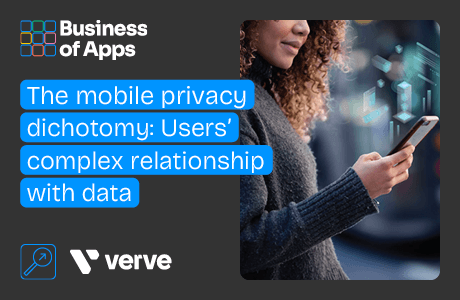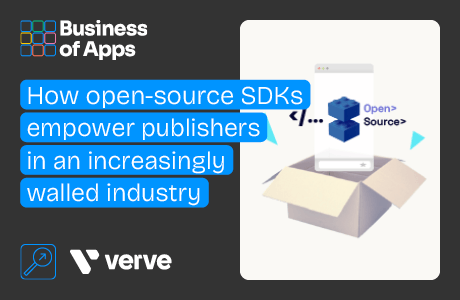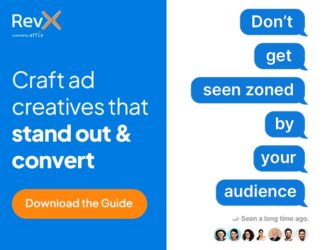With the privacy landscape in flux, delivering relevant ads to consumers has never been more difficult to navigate. Mobile users in particular paint a nuanced picture. Positively, as evidenced by the fact Apple didn’t see permission rates for in-app tracking hit zero the instant it let consumers opt out. It’s also supported by Verve’s findings that almost seven in ten (68%) have more trust in data sharing than two years ago, because of tighter control over app privacy settings.
But at the same time, assuming that data privacy is no longer a priority or concern would be incorrect. Not only are nearly half (44%) more concerned about unauthorised access in comparison to 2022, but an overwhelming 95% majority think publishers need to be more transparent about data use and handling.
This comes at a moment when the power of contextual advertising is only becoming more apparent for all sides of the ecosystem. According to the findings, almost three-quarters of consumers think context-based ads are the most appealing and they’re also more likely to engage with them (at 74% and 73%).
In short, complex consumer feelings about data combined with a need to deliver contextually relevant advertising are creating a confusing privacy dichotomy. For publishers, this means sustaining vital ad revenue will depend on understanding two key factors: why empowered audiences are still worried about data security and what actions or solutions are needed to ease those fears and win trust.
Is the value exchange finally working for all?
Maintaining its reputation as a leading digital nation, the UK’s love of mobile remains strong. As shown by wider analysis, smartphone penetration has reached 80% of the population while app downloads exceeded 2 billion last year and revenues topped £3 billion. With this near-ubiquitous adoption has come both enhanced awareness of how mobile advertising dynamics work and willingness to be part of them, including the value exchange.
Around three-fifths (58%) of those who gave their opinion in the study are readier to share their data than two years ago due to a greater understanding of what the process entails. Moreover, it appears effectively targeted ads are being seen as an integral trading component and beneficial addition to the mobile experience, with 81% saying in-app ads make finding relevant new products easier and 67% specifically more willing to view ads for free content.
So, we’ve reached a point where seemingly many consumers are comfortable allowing data collation and giving attention to ads because they know that using these assets as bargaining chips will bring tangible advantages, including useful ads. The deeper reality, however, is more complicated.
Mounting risks counter data-sharing rewards
As well as grasping the gains that come from leveraging their data, consumers have naturally become warier about what happens when information isn’t adequately protected. Amid fast-rising online threats — with 70% of scams estimated to occur via social media, e-commerce platforms, and dating apps — personal security features prominently on the list of data risks.
This encompasses identity theft and cybercrime attacks; both mentioned as bigger concerns today than in 2022 by 45% and 44% of the survey respondents, respectively.
Turn installs into active and engaged customers
Grow in-app revenue and build user loyalty with custom retargeting and churn prediction campaigns from Adikteev.
Get startedAlongside the possibility of unpermitted data access, two-fifths (40%) of consumers surveyed by Verve feel more concerned about not knowing how their data will be used than two years ago. Indeed, almost as many are taking a strategic approach to in-app interaction, with 42% occasionally refraining from ad engagement on privacy grounds. For publishers keen to bolster their user base and ad income, overcoming these issues is an increasing priority and challenge.
The need to change course and embrace solutions that put the privacy of users first is clear. Thanks to high-profile privacy preservation projects such as Apple’s app tracking transparency (ATT) framework and Google’s Sandbox for Android, consumers are highly attuned to data collection. For publishers looking to continue to deliver messaging in a contextually relevant way, there needs to be a greater focus on embracing the solutions that can empower that.
Stepping up to meet transparency demands
It’s not surprising that data-savvy consumers have defined opinions about what’s required to make mobile experiences safer. In addition to general transparency around data management, the data shows that this includes demands for clarity and assurance in specific areas; including guarantees data won’t be shared with third parties, upgraded cybercrime defences, detailed insight into how data is handled, and further choice about how much data they share.
If mobile publishers are to win the trust of users while delivering contextually relevant ads, transparency needs to be coupled with an embrace of ID-less targeting, helping to create a solution that is as future-proof as it is powerful. ID-free options don’t need individual data at all, allowing publishers to group users into cohorts based on a range of on-device signals.
It’s vital that publishers begin testing these solutions in order to optimise what works best for them. Combine this with a contextual targeting approach and a completely privacy-focussed way to target will be unlocked.
Secondly, any data requests that are created must outline precisely what information is being collected and why, as well as the advantages for consumers, including personalised ads and in-app perks.
Then publishers need to reinforce promises of robust privacy protection by committing to follow independent standards; such as the Internet Advertising Bureau’s (IAB) Transparency and Consent Framework (TCF) V2.2, which provides a mechanism for securely communicating and upholding unique data-sharing decisions across the digital advertising supply chain.
Of course, these steps won’t eradicate every digital risk. They will, however, demonstrate that publishers are dedicated to respecting and protecting consumer data while powering effective targeting with ID-less solutions.
Given the connection the study has spotlighted between increased understanding and trust, there’s a good chance such transparency will help reduce the mobile privacy dichotomy; tipping the balance further towards confident data sharing when the conditions are right and mutual value.













